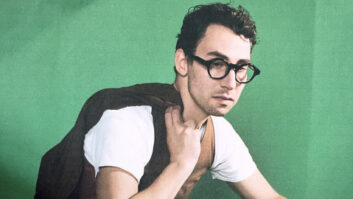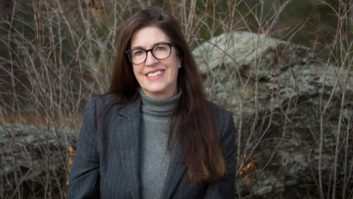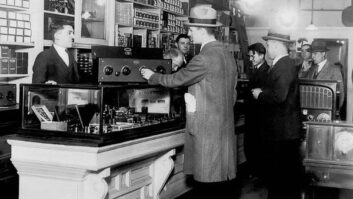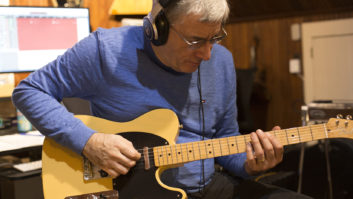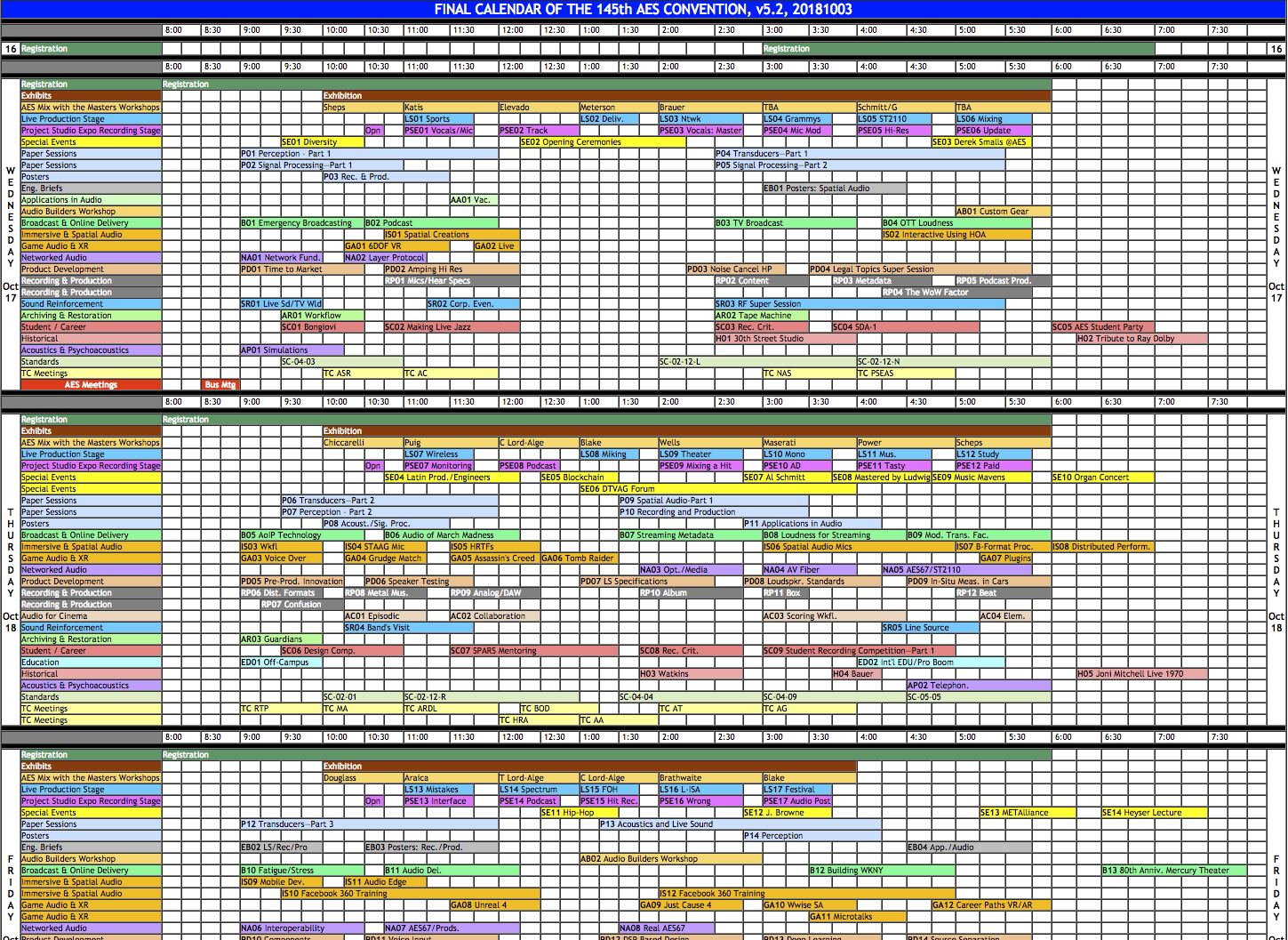
AES has always been a great place to meet your peers, see all the new gear and learn from the best in the business. This year is no different, and the educational program is comprehensive and massive. To help you navigate your way, we’ve highlighted a few select panels that are of interest either because of the topic or the presenters (both, in some cases).
If you want to see the whole, very large enchilada, you can see it online at www.aes.org/events/145/program.
Archiving & Restoration: AR01—Archiving and Best Practices for Modern Production Workflows
Wednesday, Oct. 17, 9:30 a.m. – 10:30 a.m.
Chair: Konrad Strauss, Indiana University (Bloomington, Ind.)
Panelists:
- Chuck Ainlay, METAlliance (Nashville, Tenn.)
- Maureen Droney, The Recording Academy (Los Angeles, Calif.)
- Michael Romanowski, Coast Mastering (Berkeley, Calif.); The Tape Project
While technology has democratized music creation, the abundance of recording formats and the rate at which technology evolves present a dizzying array of choices to the artist. Additionally, many artists are working outside the music industry pipeline, reaching their audience directly via online portals. In effect, they are their own curators, preserving their artistic output.
The Producers and Engineers Wing of the Recording Academy recently revised their “Recommendations for Delivery of Recorded Music Projects” and released “Recommendations for High-Resolution” music production. Additionally, they have been a leader in the development of the DDEX metadata standard that resulted in the creation of RIN. This panel will discuss technical best practices and explore the many challenges artists and producers face when creating and archiving music using modern technology.
Game Audio & XR: GA01—Practical Recording Techniques for Live Music Production in 6DOF VR
Wednesday, Oct. 17, 10:15 a.m. – 11:30 a.m.
Co-moderators:
- Calum Armstrong, University of York (York, UK)
- Gavin Kearney, University of York (York, UK)
- David Rivas Méndez, University of York (York, UK)
Panelists:
- Hashim Riaz, Abbey Road Studios (London, UK)
- Mirek Stiles, Abbey Road Studios (London, UK)
As virtual and augmented reality technologies move toward systems that can deliver full six degrees of freedom (6DOF), it follows that good strategies must be employed to create effective 6DOF audio capture. In a musical context, this means that if we record an ensemble, then we must give the end user the potential to move close and even around audio sources with a high degree of plausibility to match the visuals. This workshop looks at recording strategies that enable 3DOF/3DOF+ and 6DOF for live music performances.
Related: AES New York 2018 Detailed Technical Program Calendar of Presentations and Events Now Online, Sep. 29, 2018
Recording & Production: RP01—Microphones—Can You Hear the Specs? A Master Class
Wednesday, Oct. 17, 10:45 a.m. – 12:15 p.m.
Moderator: Helmut Wittek, SCHOEPS (Karlsruhe, Germany)
Panelists:
- Jürgen Breitlow, Georg Neumann Berlin (Berlin, Germany); Sennheiser Electronic (Wedemark, Germany)
- Eddy Bøgh Brixen, EBB-consult (Smørum, Denmark); DPA Microphones (Allerød, Denmark)
- David Josephson, Josephson Engineering (Santa Cruz, Calif.)
There are many microphones available to the audio engineer. It’s not always easy to compare them. Often the choice of the model is made on the basis of experience or perhaps just habits—or just because it looks nice. Nevertheless, there is valuable information in the microphone specifications. This master class held by well-known microphone experts of leading microphone manufacturers demystifies the most important microphone specs and provides attendees with up-to-date information on how these specs are obtained and can be interpreted. Furthermore, many practical audio demonstrations will be given to help everyone to understood how the numbers relate to the perceived sound.
Related: AES Announces Results of 2018 Board of Governors Election, Sep. 29, 2018
Recording & Production: RP02—Mastering Content for Loudness Specifications: A Discussion of Best Practices, Pitfalls and Other Practical Considerations for Engineers and Educators
Wednesday, Oct. 17, 2:30 p.m. – 3:30 p.m.
Presenters:
- Adam Ayan, Gateway Mastering Studios (Portland, Maine)
- Adam Grover, Sterling Sound
- Bob Katz, Digital Domain Mastering (Orlando, Fla.)
- Alex Kosiorek, Central Sound at Arizona PBS (Phoenix, Ariz.)
- Jamie Tagg, Indiana University (Bloomington, Ind.); Stagg Sound Services
Navigating today’s loudness standards can be confusing to young engineers and others who don’t work with these requirements frequently. This panel of audio experts and educators will address the justification for these standards, what they mean for us, and how to optimize our workflow to accommodate their requirements over a variety of commercial delivery formats. Particular attention will be paid to balancing problematic sound sources with dialogue, the state-of-the-art in metering, formats and delivery methods, and workflow considerations with which young engineers and interns should be familiar.
Immersive & Spatial Audio: IS04—STAAG Implementation Expanded: A Practical Demo of STAAG Mic Technique and Its Use in Stereo, Surround and Height-Channel Capture for Recording and Broadcast
Thursday, Oct. 18, 10:15 a.m. – 11:15 a.m.
Presenters:
- Alex Kosiorek, Central Sound at Arizona PBS (Phoenix, Ariz.)
- Jamie Tagg, Indiana University (Bloomington, Ind.); Stagg Sound Services
While working on location, audio engineers are often challenged by insufficient monitoring, making choices that lead to timbral, wet/dry balance and stereo image problems. This tutorial examines the use of STAAG (Stereo Technique for Augmented Ambience Gradient) and its established advantages for addressing stereo image, acoustic realism and flexibility in the mix. While originally optimized for immersive headphone listening, this technique has proven advantageous when upscaling to stereo, surround and even height-channel loudspeaker systems and stereo/surround broadcast streams. Also, this setup is advantageous when working on location and in live performance scenarios due to its compact arrangement and compatibility with a wide variety of microphones. This tutorial will feature physical configurations and playback of audio examples in a variety of formats.
SE05—Platinum Latin Producers & Engineers
Thursday, Oct. 18, 10:45 a.m. – 12:15 p.m.
Moderator: Andres A. Mayo, Andres Mayo Mastering & Audio Post (Buenos Aires, Argentina)
Presenters:
- Rafael Arcaute
- Gustavo Borner, igloo music (Burbank, Calif.)
- Eduardo Cabra, Visitante
- Andres Levin, Music Has No Enemies (New York / Havana); Habanico (New York/Havana)
- Eduardo Pereyra (Buenos Aires, Argentina)
- Rafa Sardina
Every year the Platinum Latin Panel brings some of the finest audio professionals to AES. The presenters, all multi-platinum record producers and GRAMMY winners, will tell you all about producing great music for the Latin market.
Audio for Cinema: AC02—Collaboration at a Distance: Real-Time Remote Recording Tools for Scoring and Post Audio
Thursday, Oct. 18, 11:30 a.m. – 12:30 p.m.
Presenter: Robert Marshall, Source Elements
Market forces and the advent of new technologies and the internet have greatly altered the world of film scoring, along with other related enterprises in audio post. Excellent tools exist for collaborating remotely on recording sessions. Workflows have built up and developed over time to allow those constrained by budget, or desiring the artistic services of someone who is geographically remote, to conduct full sessions with talkback and good monitor audio. This workshop is an exploration of one of the major tools, along with examples of how remote recording is being used in scoring and other disciplines.
SE08—Al Schmitt—On the Record
Thursday, Oct. 18, 2:45 p.m. – 3:45 p.m.
Presenters:
- Maureen Droney, The Recording Academy (Los Angeles, Calif.)
- Al Schmitt (Los Angeles, Calif.)
Al Schmitt is a multiple GRAMMY Award-winning engineer and producer, a music legend whose career spans more than six decades. In fact, Al has received the most GRAMMYs ever awarded to an engineer. He’s worked with such iconic artists as Paul McCartney, Ray Charles, Toto, Diana Krall, Steely Dan, Bob Dylan, Barbra Streisand, Neil Young, Quincy Jones, Henry Mancini, Tony Bennett, Linda Ronstadt, Natalie Cole and so many more. In this wide-ranging discussion with Maureen Droney, managing director of the Recording Academy Producers & Engineers Wing, Schmitt will share stories from his life in music along with practical tips and sage advice about what it takes to become one of the most in-demand talents in the business. This discussion also commemorates the release of Al’s autobiography: Al Schmitt on the Record: The Magic Behind the Music (Hal Leonard).
SE09—Mastered by Bob Ludwig: An Exploration of his Career and Techniques
Thursday, Oct. 18, 3:45 p.m. – 4:45 p.m.
Presenters:
- Jett Galindo, Bakery Mastering (Los Angeles, Calif.)
- Bob Ludwig, Gateway Mastering Studios (Portland, Maine)
Jett Galindo of Bakery Mastering hosts a conversation with legendary mastering engineer Bob Ludwig of the famed Gateway Mastering Studios. Ludwig’s career began during an era when mastering technology looked very different than it does today. The interview explores Ludwig’s perspective on all things mastering, including how he has navigated those changes, his observations about what has changed, exploration of technology old and new, and insights into how he approaches his work. We’ll hear a sampling of some of his work and learn what “Mastered by Bob Ludwig” really means.
Recording & Production: RP17—Music Mixing, Part V
Friday, Oct. 19, 1:30 p.m. – 3:00 p.m.
Moderator: Richard King, McGill University (Montreal, Quebec, Canada); The Centre for Interdisciplinary Research in Music Media and Technology (Montreal, Quebec, Canada)
Panelists:
- Pablo Arraya, Audio Piranha (Brooklyn, NY); Purchase College (Purchase, NY)
- Frank Filipetti
- Leslie Ann Jones, Recording Engineer and Producer, Director of Music Recording and Scoring, Skywalker Sound (San Rafael, Calif.)
- George Massenburg, Schulich School of Music, McGill University (Montreal, Quebec, Canada); Centre for Interdisciplinary Research in Music Media and Technology (CIRMMT) (Montreal, Quebec, Canada)
A panel of award-winning expert practitioners from varying backgrounds and genres within the industry will spark interesting discussion and debate. Topics will include the process of mixing and methodologies that have yielded successful results in a constantly changing industry. Focus will include the different ways to approach a mix, how to improve a mix, and how to interpret comments from clients. Balancing, processing and listening will also be addressed. There will be lots of time for Q&A so the audience can engage the panel members. This series has become very popular with young engineers, educators and seasoned professionals.
Recording & Production: RP23—Planning for On-Location Audio Recording and Production (Including Surround)
Saturday, Oct. 20, 10:45 a.m. – 1:00 p.m.
Presenters:
- Alex Kosiorek, Central Sound at Arizona PBS (Phoenix, Ariz.)
- Steve Remote, Aurasonic
- Corey Schreppel, Minnesota Public Radio|American Public Media
- George Wellington, New York Public Radio (New York, NY)
- Eric Xu, Central Sound at Arizona PBS (Phoenix, Ariz.)
Artists and engineers are recording more productions on location or in locations other than the studio. Whether it’s audio for spoken word, chorus, small chamber ensembles to large symphony orchestra, or complex jazz/pop/rock shows involving splits from FOH, pre-production is a critical aspect of any remote recording. Moreover, with new forms of immersive delivery on the horizon, surround production is now part of this equation. Some of the challenges for on-location production include maintaining a consistent aesthetic across productions, varying venue acoustics, discretion of microphone placement, monitoring, and redundant backup systems. In this workshop, today’s working professionals will give relatable and practical methods of tackling production for mobile/on-location events and discuss how it differs from studio recording. Topics will include venue scoping, bids and quotes, stage plots, communication with venue or ensemble production managers, talent coordination and other logistics. Some audio examples (including those in surround) will be included.
Want more stories like this? Subscribe to our newsletter and get it delivered right to your inbox.
Immersive & Spatial Audio: IS15—3D Audio Acoustic Recording Capture, Dissemination and Perception
Saturday, Oct. 20, 1:15 p.m. – 3:15 p.m.
Presenters:
- David Bowles, Swineshead Productions (Berkeley, Calif.)
- Paul Geluso, New York University (New York, NY)
- Hyunkook Lee, University of Huddersfield (Huddersfield, UK)
- Agnieszka Roginska, New York University (New York, NY)
This is a panel discussion on recording techniques for capturing and disseminating 3D acoustic music recordings, with an emphasis on psychoacoustic and perceptual challenges. The 90-minute panel will be immediately followed by a 90-minute playback session. There will be Q&A during the panel, but after the playback to allow audience to experience playback without interruptions.
Recording & Production: RP25—From Studio to Stage—The Impact of Technology on Live Production
Saturday, Oct. 20, 3:00 p.m. – 4:00 p.m.
Presenters:
- Erin Barra, Berklee College of Music (Boston, Mass.); MAMMA BARRA
- DJ Nebraska, Jessie Davis Music
- DJ Raydar Ellis, Berklee College of Music
- Paul “Willie Green” Womack, Willie Green Music (Brooklyn, NY)
Advancements in technology and software have transformed the live performances of DJs, looping artists and producers. DAWs and samplers do not live solely in the domain of the studio; rather, they have become the instruments of live performers across the globe. This roundtable discussion will explore the changing workflows and evolving capabilities of technology-based artists.
